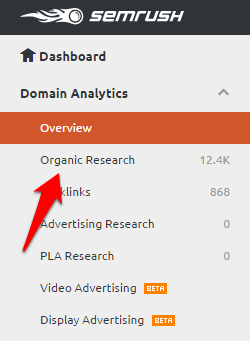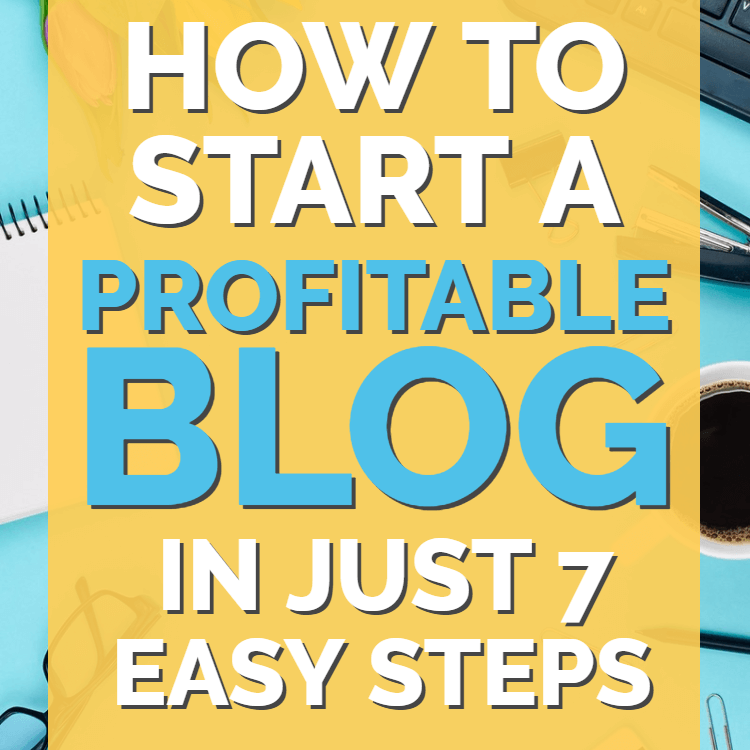Contents
Wow – here we are at lesson #6 already.
By now your blog should be all set up. You’ve chosen your niche, selected a domain name, set up WordPress and made it look beautiful.
What’s missing?
Well some articles, wouldn’t you agree?
So today we’re going to focus on how to decide what to write about.
By now you’ve done much of the hard work. Your blog is set up and now you’re ready to actually get writing some blog posts.
The question then becomes: what should I actually write about?
Even if you know your chosen niche well, there are still no guarantees that you’ll write around the particular topics most likely to garner plenty of traffic. Fortunately, with a little research it is simplicity itself to brainstorm a whole list of topics to cover on your blog.
So grab a notebook and pen, and get ready to make an impressively long list!
Here are my favorite strategies…
SEMRush
We’re going to cover seven different topics in this part of the course, but I consider SEMRush to be my “secret weapon” – the strategy that sets me apart from the crowd.
How come?
The best way to think of SEMRush is like “x-ray vision” for bloggers. It lets you discover exactly what content is doing best for your competitors, so you too can write articles around these “proven topics”.
Here’s how it works…
To start off with, grab a list of other blogs in your niche. The newer these sites are, the better. What you don’t want to be doing is looking at the mega-sites in your niche. Other bloggers just like you and me are best.
Next, navigate over to SEMRush. Now, I’ll be honest that this is a paid tool, but you don’t need to continue your membership for ever. Just a month or two is more than long enough to generate a long list of article ideas.
One at a time, simply enter the blogs that you’ve found into the search box.
On the results page select the “Organic Research” option.
This will show you a long list of the keyword phrases that your target blog already ranks for. Simply click the “Position” column to rank all keywords by their position. Everything already ranking in the top 10-20 results is a potential topic for you to write about on your blog.
And, of course, the more traffic these phrases receive the better a target they are.
See – I told you it was like “x-ray vision” – no guesswork at all, and no wasted time. Just see what is working for other bloggers in your niche and replicate their success!
It takes just minutes to carry out the research, so I strongly suggest you grab a low-cost subscription to SEMRush, at least for the first month of your blogging.
This way you’ll have more than enough time to build a huge list of keyword phrases to write about, even if you choose to cancel your account the following month.
Long Tail Pro
Long Tail Pro is my favorite keyword research tool. It allows you to brainstorm a huge list of relevant keyword phrases, and then to assess how easy it will be for you to rank for them.
The process is rather more long-winded than using SEMRush, as you actually need to do more work to find the keywords. For this reason I recommend starting with SEMRush, and once you’ve covered all the topics you found there you can then expand your research with Long Tail Pro.
What I particularly like about this tool is that customers also receive a complete “Keyword University” course which discusses exactly how to carry out keyword research for your blog, and find the best topics to write about.
We’re going to cover Pinterest extensively in a few lessons time, but for now just appreciate that this social media juggernaut is likely to be our best friend for generating visitors to your blog.
This means that if an article has done well on Pinterest you’d be well-advised to consider writing your own version.
The method is quite simple. Just hop on over to Pinterest and carry out a very broad keyword search. So if you’re writing a cookery blog you might want to search for “best recipes” or “how to cook” or suchlike. We don’t want very specific searches like “how to stop souffles from sinking”.
Then take a look through the results that come up, and look for those with loads and loads of repins.
Jot down the topic of these pins, and aim to write your own version – just even better and more useful for your visitors.
Magazine Covers
The people who publish magazines are experts at drawing us in. The know exactly what is likely to sell copies, and encourage people to keep reading.
Taking a visit to your local store can therefore be a great way to brainstorm article ideas. Find the section that relates to your topic, and consciously read through all the cover stories. You’ll likely find at least a few ideas you can repurpose for your own needs.
Popular Forum Topics
If you’re a member of a discussion forum then you’ve probably noticed the same questions cropping up time and again. This means that people are looking for the answers to these very questions, and that they’ll likely make excellent topics for articles.
Just as good, you can consider joining these forums. That way, the next time someone asks the same question you can simply direct them to your blog post. They get the answer to their question, and you get yet another visitor to your site.
Search Meter
We discussed the Search Meter plugin in a previous lesson. In essence it allows you to see exactly what people are searching for on your blog.
Now, I’ll admit that this tool isn’t very useful for brand new blogs with minimal readers. But after some months, as you see your number of readers increasing, this can turn out to be a very useful tool for seeing exactly what your visitors want to learn more about.
Ask Your Readers
The final tip arguably takes the most effort, but can yield some excellent results.
The idea is simple: you simply survey your readers, asking them what they’d like to learn more about, and then produce that content.
You might remember when you joined this course that I offered you the chance to get in touch with me? Whether you took the opportunity or not, I can assure you that plenty of people do. In this way I have a constant stream of ideas being sent to me. I just pick the most popular questions I’ve seen recently and use these as further writing inspiration.
As you can see, there are all sorts of ways to brainstorm blog post ideas. Possibly one of the greatest routes to blogging failure is simply writing about whatever you want. Just because you’re interested doesn’t necessarily mean that anyone else will be.
Instead, do your research to uncover the topics that are driving traffic to other bloggers, selling magazines and being talked about on discussion forums. By targeting the subjects you know are “hot” you’ll greatly increase the results you generate. And let’s remember: more visitors = more money for you 🙂
So today’s tasks are to use the resources listed above – especially SEMRush – to brainstorm a long list of article ideas that you can write about. Producing these articles on a regular basis will become the “fuel” which grows your blog – and your income.
See you tomorrow for lesson #7 where we’ll talk about where to legally find images to use in your beautifully-produced blog posts…














Add comment